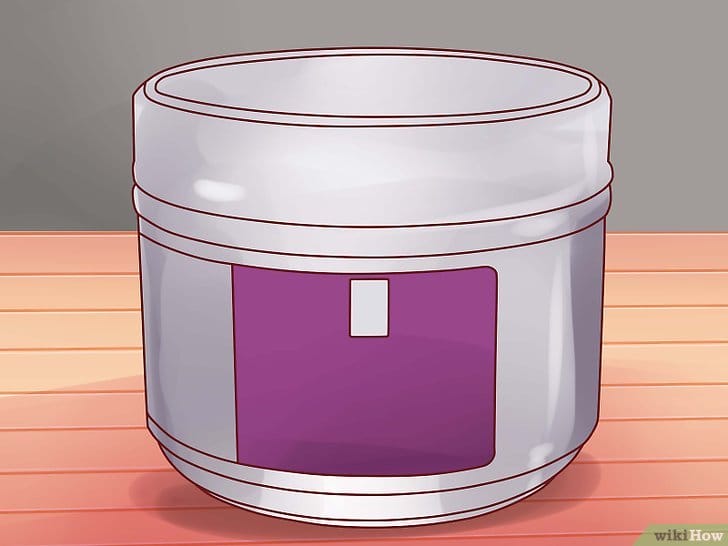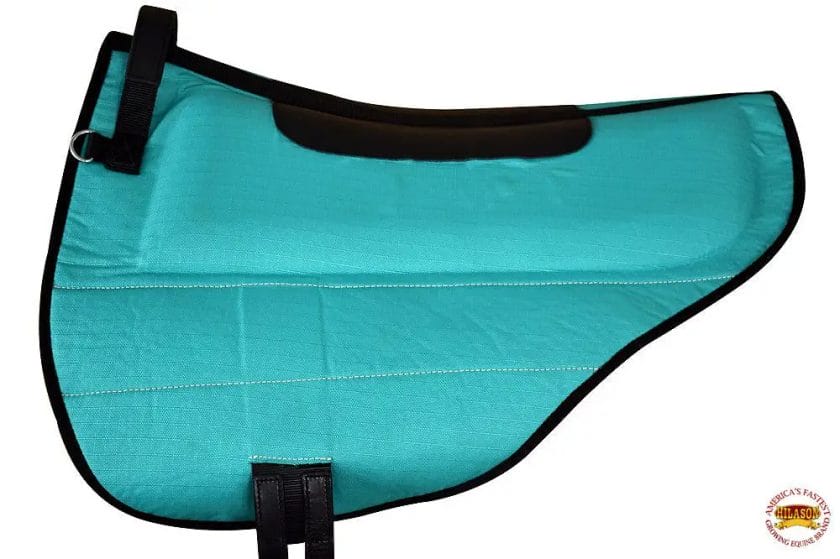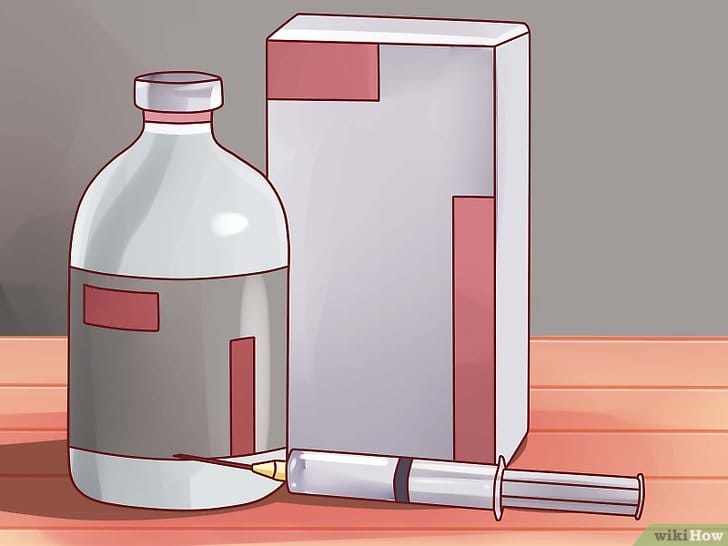A hot nail injury in horses can be a painful and potentially serious condition. The recovery time for a horse with a hot nail injury will vary depending on the severity of the injury and the promptness of veterinary care.
In most cases, horses can start to show signs of improvement within a few days to a week after treatment. However, complete recovery may take several weeks or even months, especially if the injury has caused significant damage to the hoof or surrounding tissues.
During the recovery period, it is important to provide proper hoof care, follow any treatment recommendations from the veterinarian, and monitor the horse closely for any signs of complications or infection.
Regular veterinary check-ups and ongoing management of the horse’s hoof health will help ensure a successful recovery and minimize the risk of future issues.

Signs and Symptoms of a Horse with a Hot Nail
A hot nail is a term used to describe an injury that occurs when a horse’s hoof is pricked or injured by a nail. This can cause significant discomfort and pain for the horse, and if left untreated, can lead to more serious issues. It is crucial for horse owners and caretakers to be able to recognize the signs and symptoms of a horse with a hot nail.
1. Lameness and Discomfort
One of the most common signs of a hot nail is lameness and discomfort in the affected horse. The horse may limp or favor one leg, and may show signs of pain when walking or trotting. The lameness may vary in severity, depending on the location and depth of the injury.
2. Increased Heat and Swelling
A horse with a hot nail may exhibit increased heat and swelling in the affected hoof. The injured area may feel warm to the touch, indicating inflammation and possible infection. The swelling may be localized around the nail entry point or may extend to the surrounding tissues.
3. Sensitivity to Touch
If a horse has a hot nail, they may exhibit sensitivity when the affected hoof is touched or pressure is applied to the injured area. The horse may react by pulling away, flinching, or showing signs of discomfort. This sensitivity is a clear indication that there is an issue with the hoof.
4. Changes in Behavior
A horse in pain from a hot nail may display changes in behavior. They may become agitated, irritable, or exhibit signs of distress. The horse may be reluctant to move, stand for long periods, or put weight on the affected leg. These behavioral changes are the horse’s way of expressing their discomfort.
5. Unusual Odor or Discharge
In some cases, a horse with a hot nail may have an unusual odor coming from the affected hoof. There may also be the presence of discharge, such as pus or blood. These signs indicate that there may be an infection present and should be addressed by a veterinarian promptly.
6. Visual Inspection
Performing a visual inspection of the affected hoof can also provide valuable information. Look for any signs of redness, swelling, or tenderness around the nail entry point. Check for any visible signs of injury, such as a puncture wound or bleeding. It is essential to handle the horse’s hoof with care during the inspection to avoid causing further discomfort.
In summary, the signs and symptoms of a horse with a hot nail include lameness and discomfort, increased heat and swelling, sensitivity to touch, changes in behavior, unusual odor or discharge, and visual abnormalities. If you suspect that your horse has a hot nail, it is crucial to seek veterinary attention promptly to alleviate the horse’s pain and prevent further complications.

Treatment Options for a Horse with a Hot Nail
When a horse experiences a hot nail, it can cause significant discomfort and pain. A hot nail refers to a condition where a horseshoe nail is driven too close to the sensitive structures within the horse’s hoof, resulting in inflammation and potential infection. As a responsible horse owner, it is essential to understand the treatment options available for a horse with a hot nail to alleviate their discomfort and promote healing.
1. Identify the Issue
The first step in treating a horse with a hot nail is to identify the problem. Look for signs of lameness, such as limping or reluctance to put weight on the affected hoof. The horse may also show signs of heat or swelling in the hoof area. If you suspect a hot nail, it is crucial to contact a veterinarian or a farrier experienced in hoof care to confirm the diagnosis.
2. Remove the Shoe
To begin the treatment process, the shoe that contains the hot nail needs to be carefully removed. This should be done by a professional farrier who can handle the task safely and effectively. Trying to remove the shoe yourself without proper knowledge and tools can cause further injury to the horse’s hoof.
3. Soak the Hoof
After removing the shoe, soaking the affected hoof in warm water with Epsom salt can help reduce inflammation and provide relief to the horse. The warm water helps to soften the hoof wall, making it easier to treat the hot nail. Soaking the hoof for about 20 minutes, twice a day, can aid in drawing out any pus or infection that may be present.
4. Apply Topical Treatments
Once the hoof has been soaked and cleaned, applying a topical treatment can help promote healing and prevent infection. An antiseptic solution or ointment recommended by the veterinarian can be applied to the affected area. This will help keep the wound clean and protect it from further contamination.
5. Provide Pain Relief
A horse with a hot nail may experience significant pain and discomfort. To alleviate their discomfort, non-steroidal anti-inflammatory drugs (NSAIDs) prescribed by a veterinarian can be administered. These medications can help reduce inflammation and provide pain relief to the horse during the healing process.
6. Monitor for Complications
While following the treatment plan, it is essential to closely monitor the horse for any signs of complications or worsening of the condition. Watch for increased lameness, persistent heat or swelling in the hoof, or any signs of discharge or foul odor. If any of these symptoms occur, contact a veterinarian immediately for further assessment and treatment.
7. Adjusting the Shoeing
After the hot nail has been treated, it is crucial to ensure proper farrier care to prevent future occurrences. The farrier may need to adjust the shoeing and ensure that the nails are placed at an appropriate distance from sensitive structures within the hoof. Regular hoof maintenance and inspections are essential to detect any issues early on and prevent complications.
Summary
When a horse suffers from a hot nail, prompt treatment is necessary to alleviate their pain and promote healing. Identifying the issue, removing the shoe, soaking the hoof, applying topical treatments, providing pain relief, monitoring for complications, and adjusting the shoeing are the key steps involved in treating a horse with a hot nail. It is crucial to involve a veterinarian or an experienced farrier throughout the process to ensure proper care and minimize the risk of complications.

Recovery Time and Factors Affecting Healing in Horses with Hot Nails
When it comes to hoof care in horses, one common issue that often arises is the occurrence of hot nails. Hot nails refer to a condition where a horseshoe nail is improperly placed, causing discomfort and potential injury to the sensitive structures within the hoof. It is important for horse owners and caretakers to understand the recovery time for hot nails and the factors that can affect the healing process.
Understanding Hot Nails
Hot nails occur when a horseshoe nail is driven too close to the sensitive structures within the hoof, such as the laminae or the sensitive laminae. This can result in pain, inflammation, and even infection. Hot nails are typically caused by human error during the shoeing process, often due to a misjudgment of the hoof’s anatomy or improper nail placement.
When a hot nail occurs, it is crucial to address the issue promptly to minimize discomfort and prevent further complications. Early detection and proper treatment can significantly reduce the recovery time for horses with hot nails.
Treatment and Recovery Time
The treatment for hot nails involves removing the offending nail and providing appropriate care to promote healing. In some cases, the horse may require medication to alleviate pain and reduce inflammation. The recovery time for hot nails can vary depending on several factors, including the severity of the injury, the horse’s overall health, and the effectiveness of the treatment.
On average, horses with hot nails may require several weeks to a few months to fully recover. During this time, it is essential to provide the horse with a clean and supportive environment to promote healing. Regular hoof care, such as trimming and balancing, may also be necessary to ensure proper hoof growth and prevent further complications.
Factors Affecting Healing
Several factors can influence the healing process for horses with hot nails. These factors include:
- Severity of the injury: The extent of the damage caused by the hot nail can affect the healing time. If the sensitive structures within the hoof are significantly damaged, the recovery period may be prolonged.
- Horse’s overall health: A horse in good overall health is more likely to recover faster from a hot nail injury. Proper nutrition, regular exercise, and routine veterinary care play a vital role in supporting the healing process.
- Proper treatment and care: Timely and appropriate treatment, including removing the hot nail, addressing any infection or inflammation, and providing necessary medications, can significantly impact the healing time.
- Hoof maintenance: Regular hoof maintenance, such as proper trimming and balancing, is crucial to ensure the horse’s hooves grow correctly and minimize the risk of further complications.
Preventing Hot Nails
While hot nails can occur due to human error, there are steps that can be taken to minimize the risk of their occurrence. Proper training and education for farriers and horse owners on hoof anatomy and nail placement are essential. Regular communication and collaboration between horse owners, farriers, and veterinarians can help prevent hot nails and promote optimal hoof health.
Summary
Recovery time for horses with hot nails can vary depending on the severity of the injury, the horse’s overall health, and the effectiveness of the treatment. On average, it may take several weeks to a few months for a horse to fully heal from a hot nail injury. Factors such as proper treatment, hoof maintenance, and overall horse health play a significant role in the healing process. Preventive measures, including education and collaboration, can help minimize the occurrence of hot nails and promote optimal hoof health in horses.
Preventing Hot Nails in Horses: Best Practices and Tips
Hot nails, also known as nail pricks or nail bind, are a common issue that can cause discomfort and pain for horses. When a horseshoe nail is placed too close to the sensitive structures of the hoof, it can result in inflammation and lameness. As a responsible horse owner or farrier, it is crucial to take preventive measures to avoid hot nails and ensure the well-being of your equine companion. In this section, we will discuss the best practices and tips for preventing hot nails in horses.
1. Proper Nail Placement
One of the most important factors in preventing hot nails is proper nail placement during the horseshoeing process. It is essential to ensure that the nails are placed within the insensitive hoof wall and away from the sensitive structures, such as the laminae and the sensitive sole. The farrier should have a thorough understanding of the equine hoof anatomy and be skilled in accurately positioning the nails.
2. Regular Hoof Maintenance
Maintaining the hooves in good condition is crucial for preventing hot nails. Regular hoof care, including trimming and balancing, helps in maintaining the proper shape and balance of the hooves. When the hooves are properly trimmed, it allows for correct nail placement and minimizes the risk of nail pricks. Engaging the services of a skilled farrier on a regular basis is essential for optimal hoof maintenance.
3. Adequate Shoe Fitting
Choosing the right size and type of horseshoe is vital for preventing hot nails. Ill-fitting shoes can cause pressure points and lead to nail pricks. It is necessary to work with a knowledgeable farrier who can assess the horse’s hoof shape and select the appropriate shoe size and style. Custom-made shoes may be required in some cases to ensure a precise fit and reduce the risk of hot nails.
4. Proper Nail Sizing
Using the correct nail size is crucial for preventing hot nails. Nails that are too long or too short can cause issues. Ideally, the farrier should select nails that are long enough to penetrate the hoof wall adequately but not so long that they penetrate sensitive structures. The nail should exit the hoof wall at an angle that avoids sensitive areas. It’s important to remember that each horse’s hooves may require slightly different nail sizes.
5. Regular Communication with the Farrier
A strong partnership and open communication with your farrier are essential for preventing hot nails. Regularly discussing any concerns or changes in the horse’s hoof condition with your farrier can help address potential issues before they become more severe. The farrier can make adjustments in the shoeing process or provide recommendations for hoof care based on their expertise and knowledge.
6. Regular Hoof Monitoring
Vigilant monitoring of your horse’s hooves is crucial in preventing hot nails. Regularly inspect the hooves for signs of inflammation, tenderness, or lameness. Catching any potential issues early allows for prompt intervention and reduces the risk of hot nails. If you notice any abnormalities or changes in your horse’s gait or behavior, it is essential to contact your farrier or veterinarian for further evaluation.
7. Proper Training and Handling
Proper training and handling of horses can also contribute to preventing hot nails. A well-trained horse is more likely to stand calmly during the shoeing process, allowing the farrier to accurately and safely place the nails. Patience, positive reinforcement, and desensitization exercises can help in training horses to be cooperative during hoof care procedures.
8. Regular Farrier Evaluation
Regular evaluation of the farrier’s work is crucial to ensure continued prevention of hot nails. Observe the horse’s movement and behavior following each shoeing session. If you notice any signs of discomfort or lameness, it may indicate a hot nail or other hoof issue. Contact your farrier to reevaluate the shoeing and address any concerns.
In summary, preventing hot nails in horses requires proper nail placement, regular hoof maintenance, adequate shoe fitting, proper nail sizing, regular communication with the farrier, regular hoof monitoring, proper training and handling, and regular farrier evaluation. By implementing these best practices and tips, you can minimize the risk of hot nails and ensure the overall hoof health and well-being of your equine companion.
FAQs
How long does it take for a horse to recover from a hot nail?
The recovery time for a horse with a hot nail can vary depending on the severity of the injury. In mild cases, it may take a few days to a week for the horse to fully recover. However, in more severe cases, it can take several weeks or even months for the horse to heal completely.
What are the symptoms of a hot nail in a horse?
Some common symptoms of a hot nail in a horse include lameness, heat and swelling in the affected hoof, and sensitivity to pressure. The horse may also show signs of pain and may be reluctant to put weight on the affected foot.
How is a hot nail in a horse treated?
The treatment for a hot nail in a horse usually involves removing the nail, cleaning the affected area, and providing appropriate hoof care. In some cases, the horse may also require medication to manage pain and inflammation. It is important to consult with a veterinarian for proper diagnosis and treatment.
Conclusion
In conclusion, the recovery time for a horse from a hot nail injury can vary depending on the severity of the injury and the individual horse’s ability to heal. However, with proper veterinary care and treatment, most horses can recover within a few weeks to a couple of months.
During the recovery period, it is crucial to provide the horse with a clean and comfortable environment, appropriate hoof care, and pain management. Regular monitoring by a veterinarian is advisable to ensure that the wound is healing properly and to address any complications that may arise.
By following the recommended treatment plan and giving the horse ample time to heal, the chances of a full recovery from a hot nail injury are favorable.
